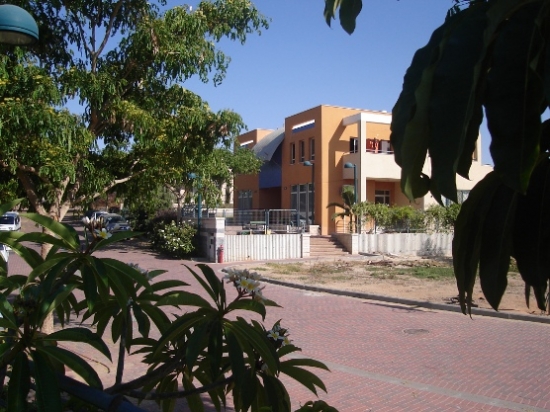
Recently I had the privilege of meeting Nomika Zion since I wanted to hear about the urban kibbutz (Kibbutz Ha-Ironi). I was overwhelmed by her personality and passion.
Nomika together with a small group established the Migvan (diversity) kibbutz in 1987 in Sderoth – one of the first in the country and the first in the periphery in a development town. I already knew that six of their members led by Nitai Shreiber created the wonderful non-governmental organization Gvanim which I mentioned in my previous letter.
In 1985 Nomika, now the chair of Migvan, and a group of young kibbutz members, felt that the kibbutzim were no longer fulfilling as positive a role as they had done in the past. Nomika is from Reshafim, a Shomer HaTzair kibbutz near Beth Shaan. They decided to look for another form of communal living which she calls ‘soft socialism’. These young people wanted to form a new model – a cooperative where the individual is in the center unlike the older large kibbutzim where the needs of the cooperative were the deciding factor.
After two and half years their ideas crystallized and they came to Sderot, living in the immigrant block housing until they bought land in the middle of Sderot where they built homes, a center, communal dining room, offices and other facilities.
Nomika had experienced the alienation between the kibbutzim and the development towns set up in their areas. She felt that coming to Sderot was a personal and social correction process (tikun ishi ve‘chevrati) to try and break down the barriers between the kibbutz movement and development towns. Today there are about 100 communities of varying forms but with common ideals.
How does it work? Kibbutz Migvan is determined to remain small (40 adults and 40 children) in order to retain intimacy and its relevance to the individual member, to the community of the kibbutz and to the community as a whole.
It considers the wishes of the individual member – they have the ideals which unite them but each one follows his/her profession and the earnings go into a common account. They feel they are the pioneers of today where the cooperative supports, empowers, encourages creativity and initiatives and does not paralyze so that people use their potential and find satisfaction. Cooperation is not an absolute value, it always depends on the partners.
Their relevance to the community was to establish Gvanim association (1994), which deals in the fields of people with disabilities, early childhood, youth in risk, immigrants, a trauma center ("Hossen") and more. The samples are many.
I met a member of the kitbbutz repairing the fence at Haatzmauth Ethiopian Center who also teaches trades to the youth.
The first Judge from Sderoth is a long time member of the kibbutz and like most of its members, is a professional. He studied law and was successful working in a private firm in Ashkelon but preferred to work in the Attorney General’s office in Beer Sheva for less money and now he has been appointed a Judge.
From the beginning they believed in cooperating with all institutions - local, regional and national. Perhaps this is behind the need to set up Gvanim which can mobilize and channel funds to projects the kibbutz wanted to develop to help the community. Today Gvanim employs are about 260 social and other workers not only in Sderot. They have created models for social change that have served as pilots for government and other agencies. It reminded me of ESRA’s pilot programs for immigrants from Russia which were adopted by the government, Jewish Agency and the Joint.
Gvanim initiatives are based on cooperation not competition using the strengths of the civil society and working with the government, the municipality, the private business sector and other nonprofit organizations. The government is responsible in the long run – but it relies heavily on NGOs. One example is that two years ago in the middle of the Kassam rockets, Gvanim took over the Hossen center and coordinated, under one roof, all the many government, municipal and volunteers involved in counseling for trauma.
This is true Zionism.
 DEAR EDITOR 155
DEAR EDITOR 155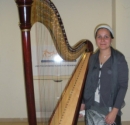 MODIIN ON THE MOVE
MODIIN ON THE MOVE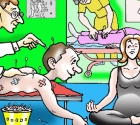 HEALTH HINTS ONIONS FOR JAUNDICE
HEALTH HINTS ONIONS FOR JAUNDICE A Funny Thing happened
A Funny Thing happened 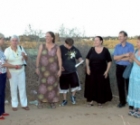 a village for young people with special needs
a village for young people with special needs NETANYA NEWS
NETANYA NEWS 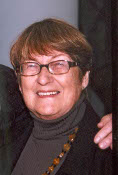 Adele Rubin
Adele Rubin